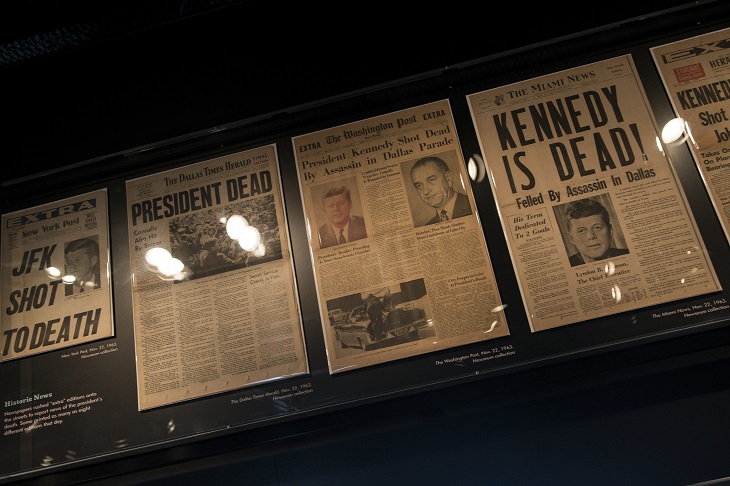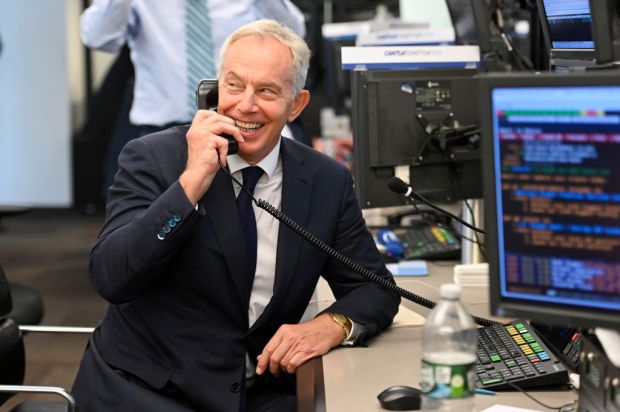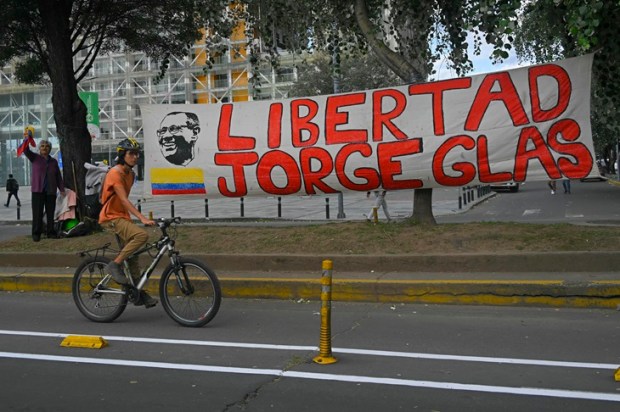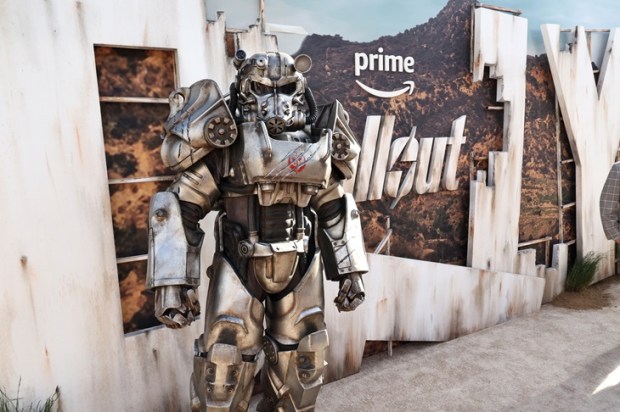I admire Tucker Carlson, Robert Kennedy Jr, and Miranda Devine, but they’ve all done a disservice recently in fuelling foolish speculation around the assassination of President John F Kennedy. Former US Senator Ron Paul has been right about more things than any other public figure in the past generation … he too is a fool on this subject. At a time when, yes the government is endlessly lying to us about Covid and global warming, we need to resist conflating those well-founded concerns with what was, until recently, wacky theories of the Left.
Lee Harvey Oswald was a fanatical communist. He was intelligent but psychotic. He shot JFK. He acted alone. This year is the 60th anniversary of that terrible day. We need to set the record straight.
Oswald had a short, miserable, and bizarre life story. He’s the most infamous American of the 20th century, so the hundreds who knew him have come forward. We know a lot about Oswald.
History intersected with Oswald before he came into the world. Researchers have confirmed his father was a third cousin of President Theodore Roosevelt as well as being related to the Confederacy’s military supremo, Robert E Lee.
Oswald was born October 18, 1939, in New Orleans but his father died just before his birth which compounded the family’s poverty. He had an older brother and an older half-brother – both of whom were sent to an orphanage when Oswald was born. He too was sent at the age of three to the orphanage, but only briefly. At age five, he and his unloving mother moved to Texas. Oswald changed school six times in Texas. Aged 12, they moved to the Bronx, New York, to live with his half-brother. They were soon asked to leave because of Oswald’s hot temper and threats of violence. The brother reports Oswald being intoxicated with being a ‘great man of history’.
His mother worked long hours in a menial job. Oswald was a loner – as an odd Texan kid, he was easily teased in the Bronx. At the age of 13, his frequent truancy saw him spend three weeks in a psychiatric detention centre. On his release, the report found Oswald had an:
‘…intense anxiety, shyness, feelings of awkwardness and insecurity. He says, “I don’t want a friend and I don’t like to talk to people. I dislike everybody.” He has a “vivid fantasy life, turning around the topics of omnipotence and power, through which he tries to compensate for his present shortcomings and frustrations”. This 13-year-old well-built boy has superior mental resources and functions only slightly below his capacity level in spite of chronic truancy. Lee has to be diagnosed as “personality pattern disturbance with schizoid features and passive-aggressive tendencies”. Lee has to be seen as an emotionally disturbed youngster who suffers under the impact of emotional isolation and deprivation, lack of affection, absence of family life, and rejection by a self-involved and conflicted mother.’
When Oswald was 14, America was gripped by the trial and execution of Oswald’s fellow New Yorkers and Soviet spies – Julius and Ethel Rosenberg. Oswald was engrossed by the saga and one of the very few Americans who fiercely sided with the Rosenbergs. For everything that has ever been written about Oswald, rarely has the obvious been noted: the Rosenberg drama was the pivotal moment in Oswald’s life. Oswald previously skipped school to go to the zoo and museums – now he went to libraries to immerse himself in Marxism and spy stories. He revered the martyred Rosenbergs. He set out to emulate them. For the ten remaining years of his life, Oswald was hellbent on one thing – advancing communism through direct action.
Oswald’s truancy continued. He was facing a court hearing that would take him out of the care of his mother, so they bolted to New Orleans. Then, a year or two later, they wound up back in Fort Worth, Texas. He had attended a dozen different schools across three states until he finally dropped out at 17 to join the marines. His interest in communism had only grown therefore it seems odd he was so eager to join the US military … but the Rosenberg’s had stolen their intel from the military and so too would Oswald (or at least, he would try).
He was a better-than-average marksman and sent to a US military base in Japan where he worked on sensitive but low-level intelligence relating to the Soviet Union. His military career was stymied because Oswald’s big-mouth couldn’t resist talking about his love of communism. When not on duty, he would socialise with the tiny Japanese communist movement, subsequently he was relegated to kitchen duties and at a bar Oswald challenged the officer he blamed for his demotion to a fist fight. Oswald was detained in a military prison and so embittered on release he started learning Russian.
He returned to America aged 19 and immediately sought a discharge on the grounds his sick mother needed him, but the day after that was approved he applied for a passport. He got himself to Finland where he purchased a train ticket to Moscow on a one-week tourist visa. He startled his guide by saying, ‘I’m a US marine. I’m a communist. I want to defect.’ The KGB were interested, but it didn’t take them long to realise they were dealing with a useless nut and refused his request for asylum. Oswald was told to leave the Soviet Union that day. Distraught, he attempted suicide. That paid off and, out of pity, a politburo member intervened and said he could stay. The defection was briefly reported in the Western media, quoting Oswald saying his motivation was ‘purely political’. The Russians, however, sent this oddity to faraway Minsk evidently still suspicious he may be an American spy.
He wrote to his brother:
‘The Soviet Union is a country I have always considered to be my own. I came to find freedom. I will never return to the United States which is a country I hate. I and my fellow workers and communists would like to see the present capitalist government of the US overthrown.’
Millions had tried to flee communism, but a few hundred American communists had in the decades before Oswald defected to the Soviet Union. All came to regret it, and so would Oswald. He was given an above average flat, a factory job, and an extra allowance that gave him a slightly better life than most. An American in Russia in 1959 stood out and many recall their experience with him. Three decades later, the Soviet Union collapsed and President Boris Yeltsin welcomed Western researchers. Several of Oswald’s Russian acquaintances spoke on camera in the 1990s – KGB interrogators, work colleagues, friends, and girlfriends. These credible accounts paint a picture of an oddball ex-pat who was lightly monitored by the KGB but with no interest in developing him into an asset.
For a while Oswald was happy, but dreary Soviet life bored him (he missed tenpin bowling). After two and a half years he, his Russian wife, and young child departed for the US. The Russians were happy to be rid of him, but why would America welcome back a marine who had defected? Oswald had negotiated with the US embassy in Moscow that charges be dropped if he returned and the Americans agreed thinking he might bring intel. The FBI did interview him shortly after his return for a standard debriefing. Oswald, however, had an aggressive demeanour and he shared no useful insights.
The ‘great man of history’ was convinced he would be greeted by the American TV cameras but there was zero interest when he stepped off the plane in Texas. It’s now mid-1962 and 18 months until the assassination.
The new Oswald family settled in Dallas. The couple bickered and Oswald became violent. Their few friends were mostly ethnic Russians, but they were anti-communist so Oswald argued with them endlessly.
Despite experiencing life in the Soviet ‘paradise’ his devotion to communism remained extreme – Russia had failed to live up to the Marxist ideal but the Cuban ‘paradise’ was now his focus. He worked a series of odd jobs which always ended badly because of his short fuse.
Eight months before the assassination, Oswald bought a rifle under a false name. He was so incensed by the strident anti-communism of retired US Major General Edwin Walker who lived nearby, that Oswald fired a shot into his home and injured Walker. Later that night, Oswald told his wife what he had done. She kept silent out of fear of her increasingly psychotic husband. Oswald got away with that assassination attempt, but he had tasted the thrill and would use the same rifle in coming months.
Oswald was itching to get involved with local communists, but they were almost non-existent in Texas so he moved to New Orleans. The marriage was strained and the wife and child were, at this point, in and out of his life. Many anti-communist Cubans had fled to New Orleans – training so that they could return and overthrow Castro. Oswald set out to provoke these anti-communists. He opened a small office for a thinly veiled communist front group: the Fair Play for Cuba Committee. He printed pro-Castro leaflets and handed them out on New Orleans streets and deliberately got into scuffles with anti-communists. His strident message and the street activism saw him invited briefly onto New Orleans TV and radio where he spoke of his devotion to Marxism and was forced to confess he had lived in the Soviet Union. His campaign was locally disgraced and the activity recruited zero members to his front group. It was yet another failed venture, but his ideological energy was irrepressible. He soon hatched a new grand plan.
He told his wife he wanted to hijack a plane with a pistol and force it to land in Cuba where he would support Castro. His wife’s role was to tell the passengers she had a bomb and to not panic, but this was disregarded when she pointed out she couldn’t speak English.
Two months before the assassination, Oswald took a bus to Mexico. Two Australian female backpackers were on the bus and recall Oswald speaking of his time in Russia and how he wanted to get to Cuba. He told the Cuban embassy in Mexico City of his pro-Castro activities in America and intention to travel to Cuba. The Cuban diplomats were dubious and delayed by saying it would only be considered if he was en route to the Soviet Union. For five days he was back and forth between the Cuban and Soviet embassies but they told him it would take months to process – his emotional outbursts and anger didn’t help. Those Cuban and Russian embassy officials spoke on camera in the 1990s and vividly recall Oswald. Their credible accounts describe a messed-up person at breaking point.
After yet another failure, Oswald returned to Dallas. He had no job and no money to support his family, who were now living with a friend. A neighbour felt pity for their dire circumstances and mentioned a job at the Texas School Book Depository as a warehouse clerk. He commenced four weeks before the presidential visit to the city. In mid-November 1963 Dallas newspapers published a map of the presidential motorcade route. By terrible chance, President Kennedy would soon be just below the window of his new workplace.
On the day of the assassination, Oswald left home with the gun concealed in a long box he told a colleague contained curtain railings. He left all the money he had and his wedding ring on the kitchen table. Oswald did not expect to come home.
The ‘great man of history’, the fanatical communist, the sharp-shooter, and the attempted assassin of General Walker stumbled into a chance he would not waste. Oswald fired three shots with two hitting and killing President Kennedy.
He fled the scene and 30 minutes later shot and killed a police officer who thought he looked like the suspect of the crime of the century. Oswald then tried to hide in a movie theatre. Suspicious onlookers called police who confronted him. Oswald went for his gun to shoot a second police officer but this time was unsuccessful.
Oswald would only live another two days but, on several occasions, he was on TV and appeared to somewhat enjoy the limelight. Ignored his entire life, he was now the world’s biggest news item.
The mega-drama was then compounded by Oswald himself being killed by Jack Ruby – also on live TV. Ruby’s motivation was not complex. The nation and much of the world were distraught and angry at this villain. Foolishly thinking he was a uber-patriot, Ruby shot Oswald out of vengeance. It would have been the equivalent of an American shooting Osama Bin Laden in the days after 9/11. Some suggest Ruby was coordinated by others to take out Oswald … but what would be in it for Ruby? He must have known he’d spend at least a decade in jail and was already elderly. Ruby calculated he’d be a hero for taking out Oswald. The world would have been far better off (and spared decades of baseless speculation) if Oswald had stood trial and then faced capital punishment. If the government had wanted to take Oswald out before he blabbed about their involvement surely they could have knocked him off at 3am in his cell…
Oswald’s 24 years contain plenty of ingredients for speculation. Theories about Oswald being a mere agent for the real culprit abound, however, are all over the shop and contradictory. What they ignore is this simple fact: Oswald didn’t need prodding. Something of this magnitude had been his life goal and then circumstances happened to provide opportunity. The vital ingredient that led to the assassination was Oswald gaining employment at the Texas School Book Depository weeks before the presidential visit. It is not disputed the job was arranged via a family friend – Ruth Park – and not any of the usual suspects. Check Ruth Park out on YouTube – she’s not a liar.
What quid pro quo could have been offered to Oswald to induce him to kill the President? He surely expected to die (he had no getaway plan) so no amount of money could have bribed him. No one knew Oswald better than his poor wife – Marina Oswald. She appeared at the Warren Commission four times and was in no doubt – her husband had killed Kennedy and acted alone. In fact, it was Mrs Oswald who shocked everyone when she revealed it was Oswald who had attempted to assassinate General Walker and he had also talked of assassinating the outspoken anti-communist, then former Vice President Richard Nixon. On the day of the assassination, Mrs Oswald had seen her husband on the news as the suspect. The police came to the family home that evening and asked Marina if they had a gun. She said yes and took them to where it was stored. It was missing. She broke down knowing the news reports were true.
There are five commonly named suspects: the CIA/FBI, Vice President Lyndon Johnson (LBJ), the Soviets, Castro, or the mafia.
The CIA/ FBI and LBJ could all have removed sex-addicted Kennedy by making public his endless scandalous affairs which likely included an East German spy – surely an impeachable offence. Kennedy was shot just weeks before nominations opened for the 1964 Democratic presidential primary season. If the affairs hit the press Kennedy would, at a minimum, not have recontested … which means the CIA/FBI or LBJ would be rid of him without all the horror and risk of a presidential assassination. If actually killing Kennedy was the objective then surely there were other ways of achieving that without relying on Oswald, who was so unpredictable he may well have blabbed. Had there been a conspiracy arranged, unreliable Oswald may well have chosen to expose it instead meaning the perpetrators were risking arrest, public demonisation of their families, and certain execution.
Would the Soviets or Cubans risk engineering the assassination of the US President when just a year earlier the world almost blew itself up over the Cuban Missile Crisis? Would they risk the inevitable retaliation with no obvious benefit – a dead US President would immediately be replaced so what benefit was there? None. And why entrust the biggest secret of all time to Oswald? The commies were baddies but rational.
The only culprit with a real motive to viciously take out Kennedy was the mafia. After becoming enormously wealthy during Prohibition, the mob were rich, powerful, and semi-mainstream by the 1960s. The Kennedy Administration declared war on the mob with many jailed or deported. Robert Kennedy, the Attorney-General, and the President’s closet confidante had written a book about the extent of the mafia’s reach and turbo-charged surveillance and prosecutions. They were also heavily invested in Cuba and angry Kennedy hadn’t done more to topple Castro which would let them regain their assets. Phone intercepts from the era reveal mob leaders openly talking about how they would like Kennedy taken out, but lots of people say stupid things when they think it’s private. The mob is in the business of ordering hits on enemies but why would the mafia entrust unstable Oswald with the job when they have their own gunmen? Had Oswald been convinced by the mafia to killed Kennedy but he had then walked into the FBI and revealed all, the mafia would have faced mass arrests and executions. The mafia are good at keeping secrets so they know not to disclose their biggest secret ever (the planned assassination of a president) to someone who is more than unreliable. The mafia theory is the most credible, but it too falls apart with a gentle prod.
There were three US presidential assassinations between 1865 and 1901. By 1963, it had been well over half a century since the last one and presidential security was lax. It was Kennedy himself who had insisted his car be open-top so he could wave to well-wishers. Ever since security around a President has been intense.
November 22, 1963, marked the onset of almost two decades of difficulty for the presidency and America. President Johnson was a broken man in early 1968 and chose to not re-contest. President Nixon resigned ignobly. President Ford had a faltering half term, and President Carter’s malaise saw his re-election bid fail. There is a Wikipedia page that lists American riots by decade – the worst period by far begins in the wake of that day in Dallas and continued for several years. On top of that American failures piled up: Vietnam, Watergate, stagflation, and Soviet advances geopolitically. This difficult patch for America began with Oswald’s crime of the century – he put America on tilt but thankfully America has had as many comebacks as it has had setbacks.
Oswald left a legacy that echoes today. His actions gave birth to the phrase ‘conspiracy theory.’ In recent years, American government agencies actually have been exposed for conspiring to shape public opinion via dubious means. It’s not helpful linking those sound claims with the mother of all falsehoods. There’s not one reputable scholar who disputes the orthodox Warren Commission view on the Kennedy Assassination – they are ‘researchers’ who specialise in just one episode of history. Regardless our popular culture keeps recycling that ‘research’. It’s the opposite of the true conspiracy we endure today around global warming and Covid. The world’s best scientists are silenced and popular culture suppresses them. It is counterproductive to conflate the two.
Lee Harvey Oswald wanted to leave his mark on history. Tragically he did and even today we suffer from his crime.
John Ruddick is the Liberal Democrats Upper House candidate in the NSW election.
Got something to add? Join the discussion and comment below.
Get 10 issues for just $10
Subscribe to The Spectator Australia today for the next 10 magazine issues, plus full online access, for just $10.


























Comments
Don't miss out
Join the conversation with other Spectator Australia readers. Subscribe to leave a comment.
SUBSCRIBEAlready a subscriber? Log in